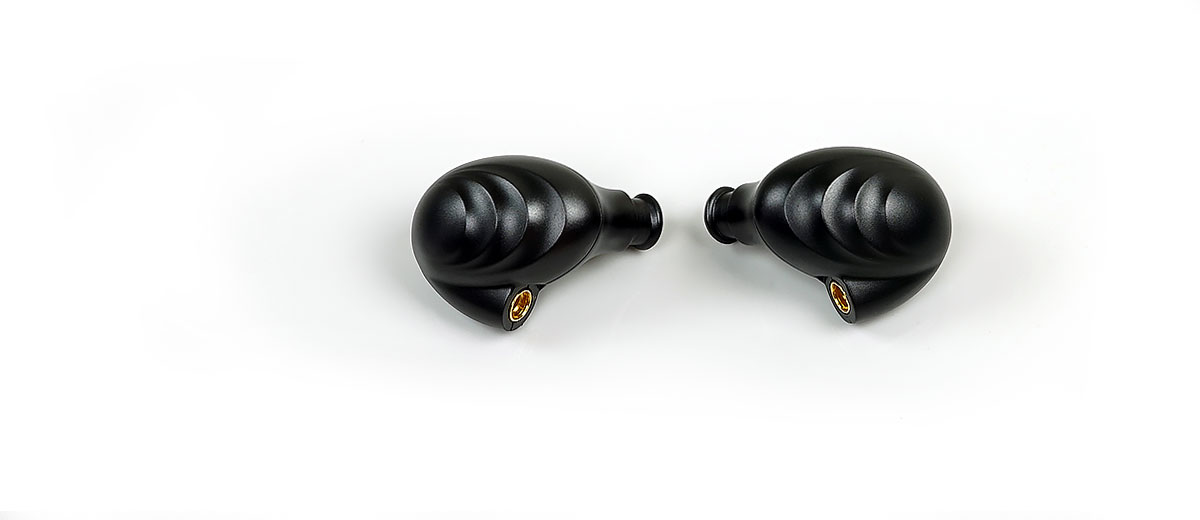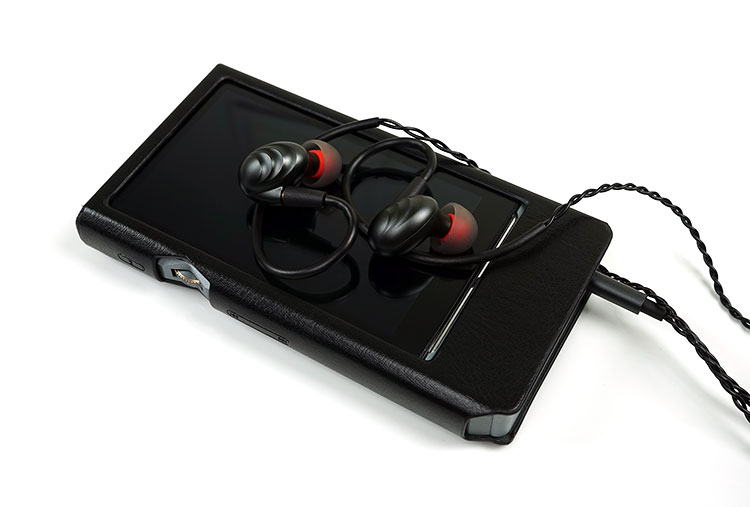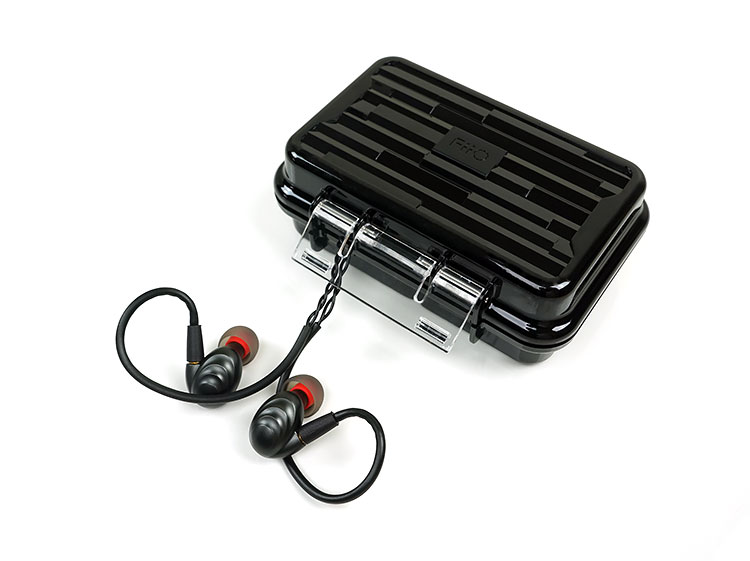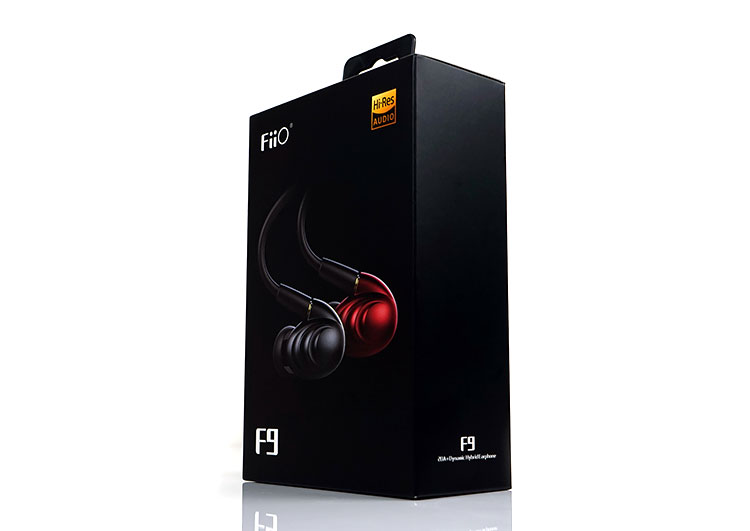Matchability
Efficiency
The F9 is rated at 28Ω and 106db sensitivity which is a medium efficiency IEM in today’s market. The good news is that despite the higher than normal ohm rating volume is not an issue on smartphones and most reasonably powered DAPs such as the X3iii and the AM3a amp module for the X7 and Q5 units.
It gets even better for noise. Sensitive IEMs such as the Andromeda pure BA setup producing hiss on the likes of the X3iii. The F9 sounds completely quiet on the same DAP. Clearly, it has been referenced against their own DAPs for noise performance which is no surprise.
Other DAPs such as the X5iii, Cayin i5 is very quiet also and none of the sources mentioned require anything more than low gain to get suitably loud enough. Do note though that volume setting are some 15-20 steps higher than some pure BA designs such as the Andromeda and a little higher than Noble 30Ω IEMs.
Scaling
The caveat, however, is that the F9 can scale and as such I am less of a fan of it jacked out of a smartphone as I am with a decent amp signal from either a DAP or portable amp. The tonal bias also plays a bit of a role in terms of the F9’s performance.
Smartphones
I did say the F9 will get plenty loud with a smartphone but it is not always the best showcase for the F9’s capability with the LG G6’s clean neutral and slightly weaker amp producing a lively but ultimately flattish sound with a more than brittle top end.
Amps
Switching to something more substantial and perhaps slightly darker such as the Cypher Labs Duet produced a richer and more dynamic experience with much better treble body.
If you want to keep the signal clean but retain plenty of low-end energy I can’t recommend the RHA L1 DAC/Amp highly enough. Despite the price point being perhaps a little overkill the impact, clarity and dynamic range was superb. If anything it does show the F9 can scale. Weaker sources may strip a little too much treble body for your liking.
If you prefer to tone down the 7k a little I do recommend trying the warmer X5iii and avoiding clean and neutral to bright sources like the Colorfly C10 and the LG G6 which I hardly classify as warm.
Balanced
Of course, FiiO would like you to try the F9 in balanced format and pretty much all of their portable gear this year is designed for a balanced output from the Q1 mark II to the AM3a and the X3iii. The balanced cable is an SPC 4-core and will have a slightly different tonal tilt to the OFC stock single-ended cable.
Power
Depending on the source there are some pros and cons. On the power level, both the X3iii and AM3a balanced outputs are good to excellent with the AM3a nudging it for me in terms of distortion and noise levels. Naturally, both will allow you to drop the volume dial a little bit more with an average of 10 digital steps on the AM3a.
Noise
Balanced on the F9 maybe make it more susceptible to higher noise floor hiss that naturally comes with some balanced outputs but none of the FiiO balanced sources displayed any significant hiss levels with the F9 balanced.
Tonal Pairing
X3iii
Tonally this is where I would veer away the X3iii as a pairing. The warmth of the X3iii may seem a good match on paper but it comes with caveats, namely a shelved down top end and that doesn’t work for V-shaped IEMs. I had plenty of bass but vocals dropped a bit and the top end ceased to have any exciting contrast.
X5iii
The better matches were the Q1 Mark II, X5iii and the Am3a amp module (X7 pairing). The X5iii was an excellent match with the F9 though note the balanced output is not much stronger than the unbalanced so there is not a huge advantage.
Tonally though it was more “correct” and treated the F9 V-shape with a bit more respect. It was also much more open and resolving sounding. Better amping and once again the F9 accepts the challenge with ease.
Select Comparisons
FiiO F5
$64.99
Technical
The F5 is slightly lower in terms of efficiency levels (32Ω and 102dB) but neither it or the F9 required any real adjustment in volume on the X5iii in low gain to match with each other. Both are good with noise and pair well with FiiO’s own sources and amps, especially in balanced mode.
Sound
The F5 and F9 are generally aiming for similar territory with a V-shaped curve though the F5’s single dynamic driver hits the proverbial ‘wall’ a little bit faster in terms of speed and clarity. From the mids upwards it is not as resolving as the F9 and the top end is not quite as sparkling or as airy sounding. Generally, the F5 has an easy-going but full sounding presentation.
Preference wise the F5’s top end might actually suit those who are a bit more sensitive to forward treble though personally, I am not sure why you would want to give up the additional resolution and clarity the triple hybrid driver F9 brings to the table. After all, it is just $35 more for a big step up in class.
RHA CL750
$139.95
Technical
The CL750 is a work of art but a high inefficient upper budget IEM at 150Ω and just 89dB. It requires an amp to sound in any way good and that is intended. This is not a Made for iPod IEm and will sound awful with your smartphone. Noise is not and never will be an issue with the CL750 though.
The F9 is the more flexible of the two in terms of noise and matchability but in terms of build, they are both beautiful in their own way. The RHA CL750 has the better stock cable but the F9 may have the edge though due to the detachable cable design.
Sound
Anyone complaining about a peaky top end on the F9 out to hear the CL750 without EQ for a vision of what peaky really is about. Better only by the summit peak of the flagship CL1, the CL750 is a bright young thing and then some.
Amping
Not properly amped the CL750 out of sources like the X5iii sound lean and brittle with only a hint of mid-bass warmth with lentils for instruments and a voice position somewhere down the proverbial tunnel. Treble is the master and you will hear plenty of it.
Properly amped and the CL750 dynamic range is excellent, the staging deepens markedly and the treble, whilst still a touch bright, sounds much more palatable. Suddenly it becomes a lot more coherent if still a little niche.
The F9
By contrast, the F9 can scale but is pretty happy off a good quality source and does not need huge amounts of power. Yes, it might err slightly to a brittle top end with smartphones but it is not going to fall apart on you like the CL750.
Generally, the big difference is the treble. The F9 treble sounds a lot smoother with more body comparatively speaking. Mids are less dipped and more natural sounding and the bass has a bit more of a planted feel with more sub-bass presence. This is a more immediately likable signature and much easier to match with sources and amps.
Oriveti Basic
$99
Technical
The BASIC is a single dynamic driver priced at $99 with a 16Ω and 108dB rating. It is a bit more efficient than the F9 and will not require as much juice to drive it from either smartphone or DAP. Like the F9 volume is not an issue but it does have mild scaling potential on better amps, such as is the case with a lot of dynamic drivers.
Sound
Tonally, the BASIC is reasonably dark with some low-end warmth via sub to midbass response that’s fairly north of neutral. The BASIC also displays a slightly elevated upper midrange to lower treble boost for percussion presence and a treble performance that falls off rather quickly post-5k.
In comparison, the F9 is more open sounding with better treble articulation and an airier more spacious sound. Vocal positioning on both is similar but the BASIC has a softer more rounded attack that renders the vocals lacking a little in engagement. They are smooth no doubt and once again if the treble peak on the F9 is too much for you then the BASIC is an option since it is much more laid back.
However, I much prefer the airier sound of the F9. With that dual BA, it simple delivers a much more engaging and refined presentation.
Our Verdict
Along with 1MORE, FiiO is really driving a heck of a lot of value from their IEM range. The price of $99 is remarkable for a hybrid triple driver. Throwing in balanced cables and very well machined build quality just goes to show that it is indeed possible to get great performance for not so many pennies.
Going V-shaped with the response will win some lose some simply because not everyone will gel with the vivid contrast between bass and treble. Some do prefer a more reference type sound that is flatter or perhaps warmer. I am glad FiiO avoided making it dark sounding like the BASIC and gave it just enough efficiency to run off most sources with a fair amount of ease.
However, for me, the treble peak is somewhat overstated in social media. It’s there but it is not brash or hard sounding and it never really gets splashy. For me it lacks a little bit of body to be so forward so out comes the EQ and usually, that tightens things up to make a super little consumer-sounding hybrid sound. If you want to hear a spike try the CL750 from RHA, it puts things into perspective.
Otherwise, the F9 resolution and clarity is a real step up from the F5 and markedly superior to a lot of competing $99 IEMs.
F9 Technical Specifications
- Impedance: 28Ω
- Driver configuration: Triple hybrid (9.2mm Dynamic driver + 2 Balanced Armature drivers)
- Frequency response: 15 Hz ~ 40 kHz
- Sensitivity: 106 dB/mW
- Cable length: 120cm
- Weight: 21g





